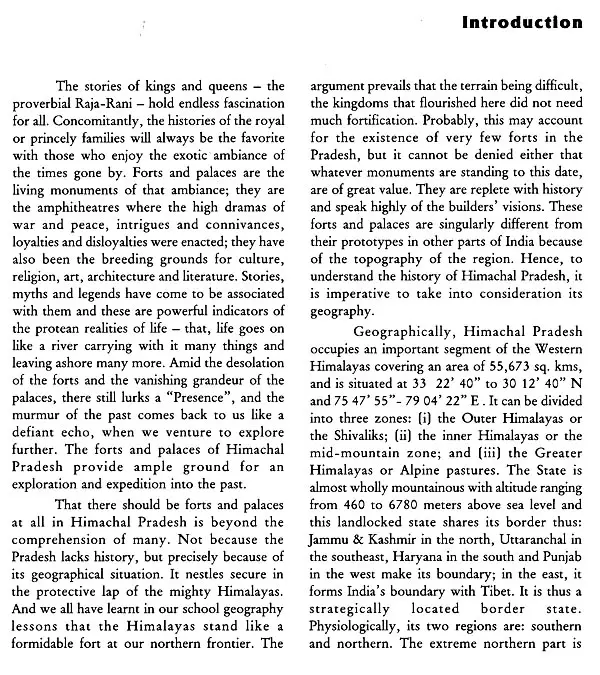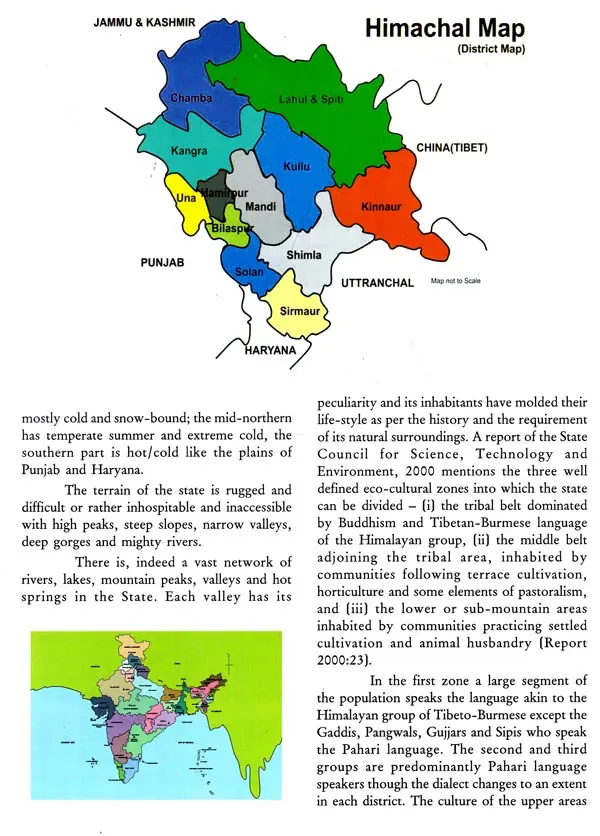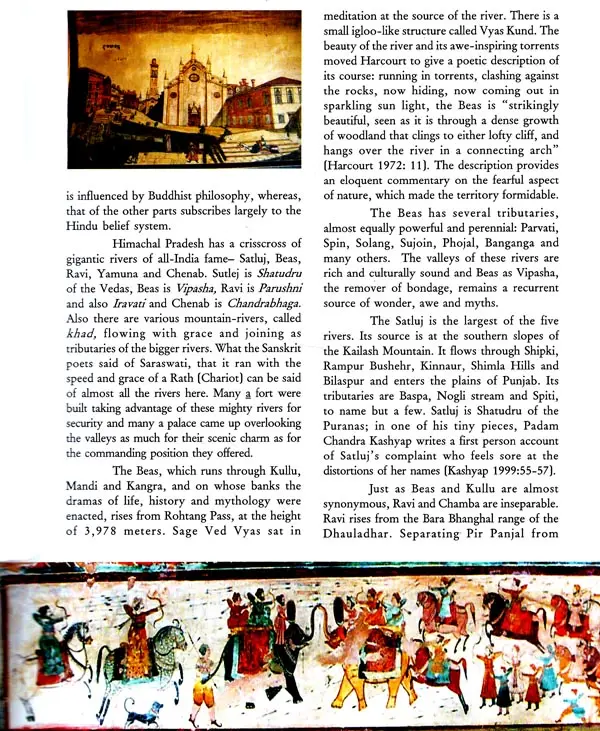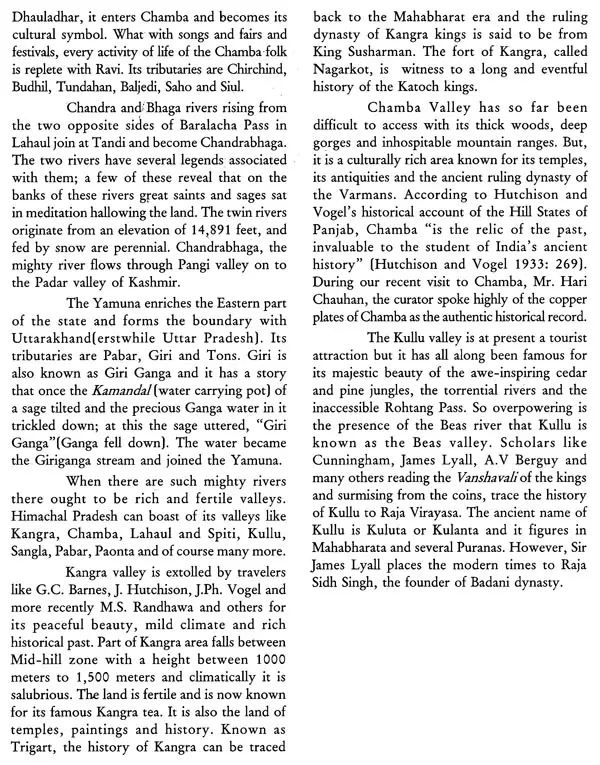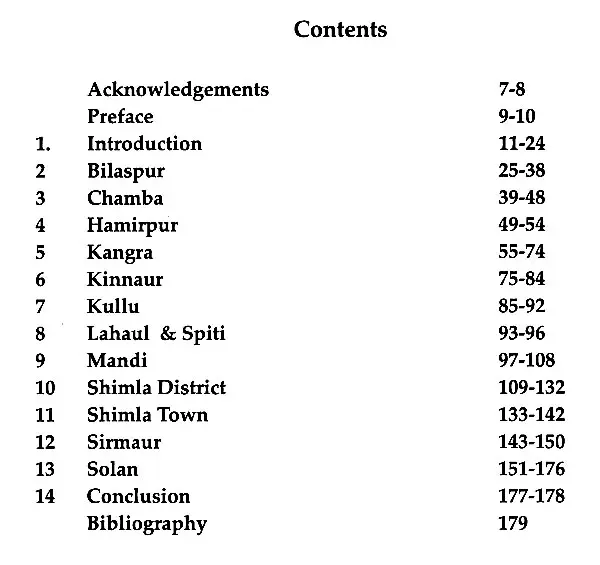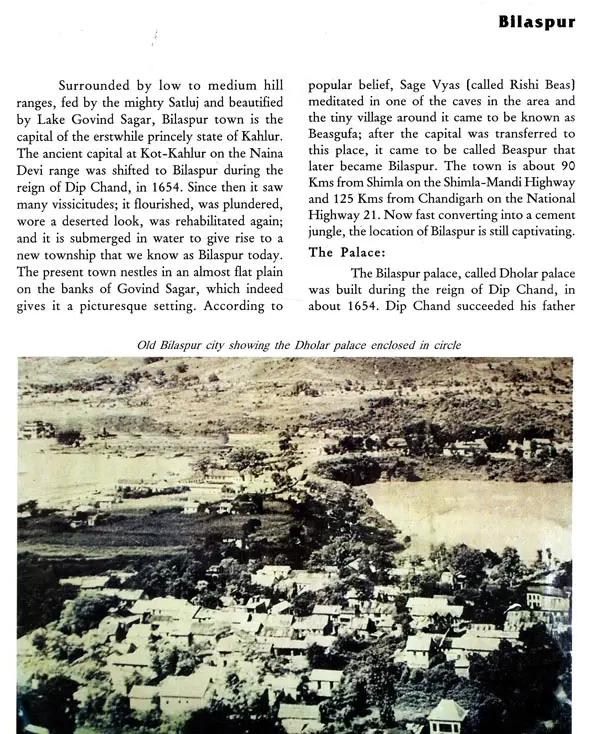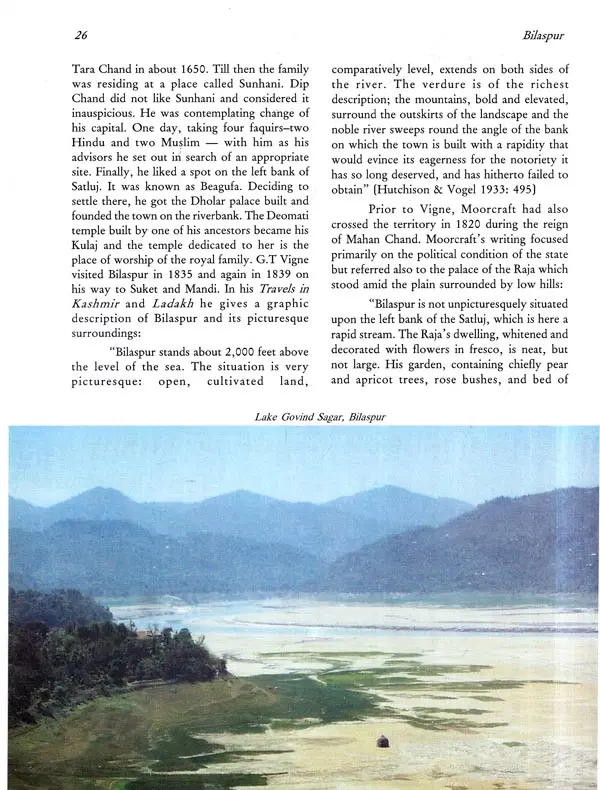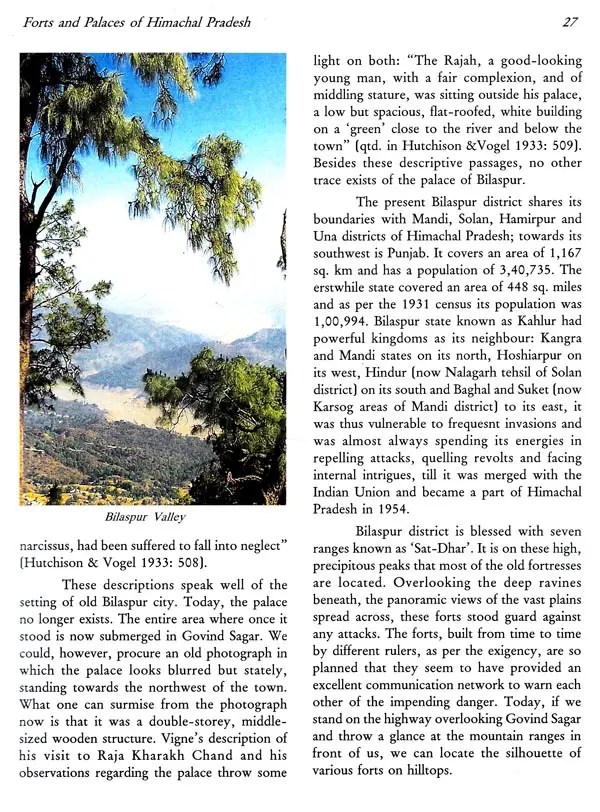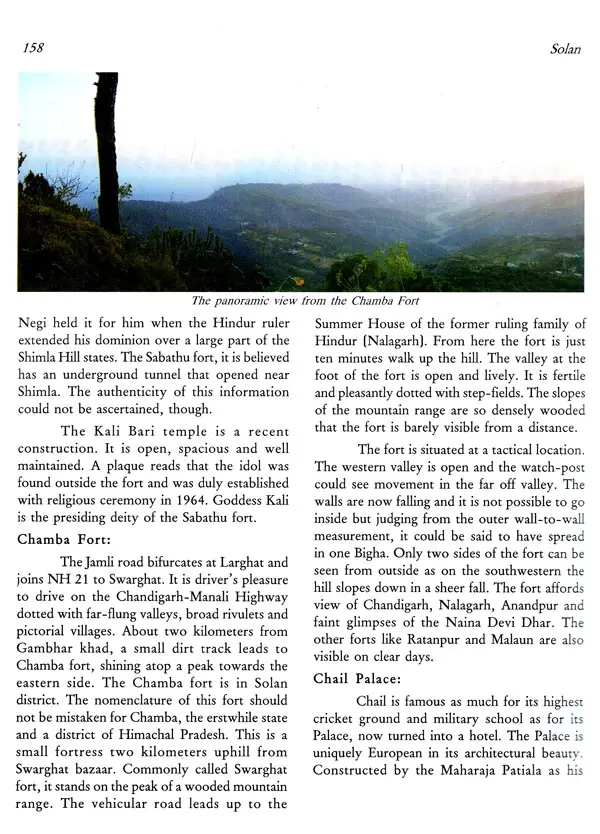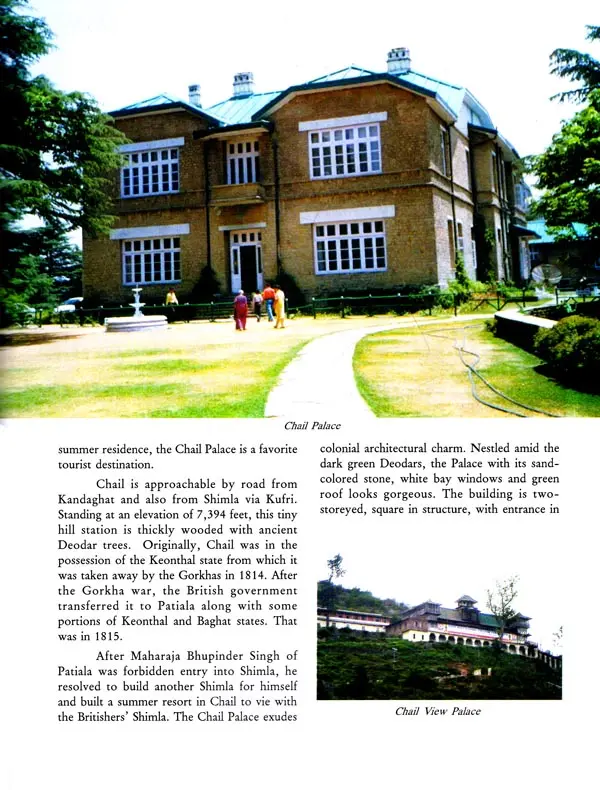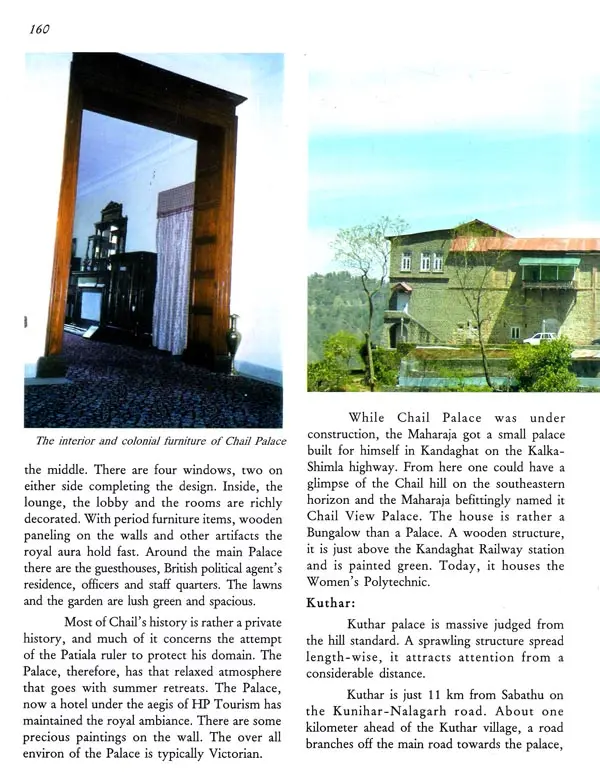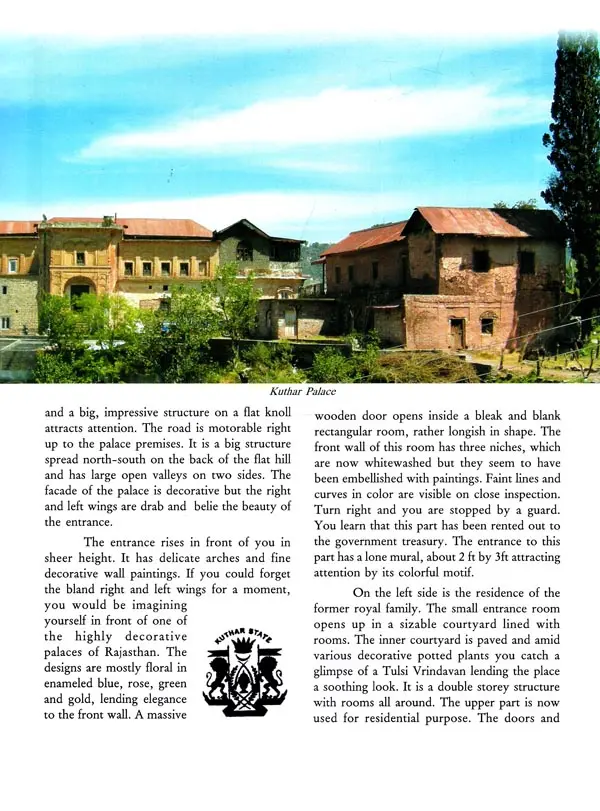
Forts and Palaces of Himachal Pradesh
Book Specification
| Item Code: | UAD359 |
| Author: | Usha Bande and Him Chatterjee |
| Publisher: | Literary Circle, Jaipur |
| Language: | English |
| Edition: | 2018 |
| ISBN: | 9788181820631 |
| Pages: | 180 (Throughout Color Illustrations) |
| Cover: | HARDCOVER |
| Other Details | 11.50 X 9.00 inch |
| Weight | 1.23 kg |
Book Description
Himachal Pradesh is a small hill state nestling in the lap of the Western Himalaya. Geographically it is a mountainous State with high ranges, snow clad peaks, unfathomable valleys, powerful rivers and gurgling streams. The topography is difficult and defies easy access. Yet, there have been adventurers who came to the Himalayan terrain, conquered the local chiefs and established kingdoms. When there is kingdom, there is bound to be fortification to secure the boundaries, and palaces to live in style befitting the ruler. Culturally, Himachal Pradesh has a pleasant amalgam of mainstream Hindu, Buddhist and tribal art, architecture, and folk practices. Some of its forts and palaces have rich treasures of temple architecture, heritage buildings, paintings, sculpture and wood carvings fit to leave the tourists wonderstruck at the beauty and depth of the culture.
When one thinks of the forts of Himachal Pradesh, the first to come to mind is Kangra fort followed by the huge Nurpur Fort, the Forts of Sujanpur Tira, Haripur-Guler and Kotla. These are testimonials to the splendid defense strategies, stupendous grandiosity of style and the great legacy in building art. On the other hand, the structure of the palaces in the upper regions of Himachal is usually tower-like. The idea was to combine fort and palace because of lack of space.
The forts and palaces of this tiny hill state may not vie with those of Rajasthan or some other states considering the topography of the Pradesh, but they still have a charm of their own and rich potential to attract a large number of tourists. The forts are built on inaccessible hills and open out to awe-inspiring valleys. The scenic grandeur of these palaces and forts is to be seen to be believed.
When the majestic Dhauladhar forms the backdrop to Jhitangiri palace (non-existent today), or to the majestic Kot Kangra, how can one describe the feeling of awe and wonder? When suddenly a fort is seen jutting its little stony head from among the thick deodars on some isolated peak, who can really resist the charm of climbing up to see what it holds? And when you see magnificent Rajasthani art on the façade of some dilapidated palace you feel sad at the ravages of time.
This book gives visual impressions coupled with brief history of the forts. It also focuses on art and architecture including woodcarvings, stone work, specificities of the architecture, like the Naggar palace of Kullu/Manali area which has typical architecture with horizontal wooden slabs and mud walls that are quake-resistant; temples and temple art associated with the palaces; treks to these palaces and forts through thick pinewoods and steep slopes; the atmosphere of awe and wonder; local customs and culture.
Usha Bande, former Fellow, Indian Institute of Advanced Study, Shimla, and retired Principal, was earlier on the faculty of English Literature. She has worked extensively in the field of Women's Studies, has authored several books and is also a Guest faculty at various institutions of repute like Vishwa Bharati Unversity, Shanti Niketan and many others.
Dr. Usha Bande worked for her doctorate on the novels of Anita Desai, interpreting Desai's characters from the angle of Third Force psychology. Hers is an innovative approach and has been widely acclaimed by US scholars in the field. Besides academic writing, Dr. Bande is fond of journalistic and creative writing and is a regular contributor to various magazines and newspapers.
Him Chatterjee, an artist of repute, is also the Chairman of the Department of Visual Arts, Himachal Pradesh University", Shimla. Known as much for his murals as for his paintings, Him Chatterjee's important assignments include the murals in CAG office, New Delhi, NSG, HQ, New Delhi, the Mall, Solan and at many other places. His abstracted landscapes on canvases and pen drawings of several historical buildings of India display high quality. His exhibits feature in many Art galleries, Indian Institute for Advance Study, Shimla and the world famous Peace Museum, Puttapathi. Among his several awards are the recognitions given for his contribution in the field of art by the NGO "Sanchetna" in 2009. He has participated in more than 40 National and International Seminars and Workshops, and held 3 Solo shows. His Art Gallery (SAF) is one of the known visiting places in Shimla.
This is not a book of the history of Himachal Pradesh though we did considerable research in the field; nor is it a treatise on architecture, though a major part of the book covers art and architecture through photographs. This book, which took shape over decades is a work born out of curiosity to know the how's, why's and what's of history, of the decisive battles, of the tenacity of the rulers to hold on despite set-backs and odds, and their love to build and preserve.
Another important factor that motivated us was near-complete absence of information on Himachal forts and palaces in standard books. Besides, there is no pictorial presentation of the beautiful old structures. Most of them are heritage buildings and can vie in beauty with many others across the country. Somehow, Virginia Fass does not give representation to Himachal in her two significant volumes: Forts of India and Palaces of India. Some other books seem to offer perfunctory treatment, while a few dispense it away in a couple of paragraphs. Publication Division's Forts of India has a small write-up on Kot Kangra, which leaves much to desire. Shri Ashok Jerath's book gives useful information about the forts on the left side of the Ravi but covers only Kangra. Granted that Himachal Pradesh has been endowed with a topography that kept it secure from outside invaders but to imagine that there could never have been the need to build forts and palaces, and that there never was turbulence would be to create an imaginary Shangri-la. Where there is man there is bound to be a compulsive urge to rule, to resist, to secure and to hold on to. This can be a reason sufficiently strong to fortify and guard the precincts.
Forts are the defensive measures of a kingdom and a palace is a ruler's personal domain being his residence. But these places of residence often serve more than the basic purpose. They display the rulers' aesthetic sense, feed their vanity, and reveal their urge to build and leave it for posterity. This is the legacy they have left for us all to admire, wonder at and feel proud of. Forts and palaces are not the monuments built in stone or wood, they are the living records of the past; they reveal the culture, civilization and the social life of the generations gone by. They are a heritage, which we have to preserve lest these vanish with time. This book is an attempt towards this end.
We have not drawn a segregating line between forts and palaces but have chosen to discuss them together precisely because in Himachal Pradesh they are almost always built as one structure except for those in Kangra, Nurpur and Sujanpur Tira, where open space is not much of a problem. Here the palaces are separate structures within the fort area or are located away. In the mountainous terrain of the high altitude areas, flat, open land is not available for sprawling buildings and whatever space is obtained it is put to maximum use. That is why tower type palace-forts were built. Before discussing art and architecture, we have focused on the history of the area and the socio-cultural-religious milieu in which life was lived and art flourished. The material is collected from printed sources, word of mouth and travel. A bibliography is provided to facilitate cross-references. When we started our work we were aware of a few well-known forts and palaces. As we proceeded with our forays into the past - examining gazettes, old travel records and other literature, taking interviews and talking to knowledgeable people, often traversing the difficult terrain both literally and metaphorically - we found a vast treasure opened up before us. We avidly went further to survey obscure places and were duly rewarded. If we choose to call our work a "treasure trove", we would not be exaggerating. It was, indeed, that.
Taking photographs, making drawings, talking to people of the area, fixing interviews with the erstwhile rulers and jotting down our observations was an experience in itself.
We encountered hospitable, open, reticent, polite, curious, interested and excited people, but hardly rude or suspicious ones. It is simply not possible to thank each one by his or her name, so we take this opportunity to thank them all collectively. Without the help from grassroots level, we could not have taken the first step. A research like this is never the work of one or two individuals. Help comes from many directions and before you are aware of the immense impact of the various helping hands, the work nears its completion. We acknowledge our debt to various persons and agencies on the "Acknowledgements" page of this work to place them prominently.
This exploration is by no means an end in itself. We do not claim to have exhausted the resources, nor do we assert that we have covered each and every nook and corner of the Pradesh. There still is immense possibility to explore, explicate and enjoy. This is a humble beginning and we hope more works will follow from enthusiastic scholars.
We dedicate this book to all those who have left a rich legacy for posterity to delight in.
